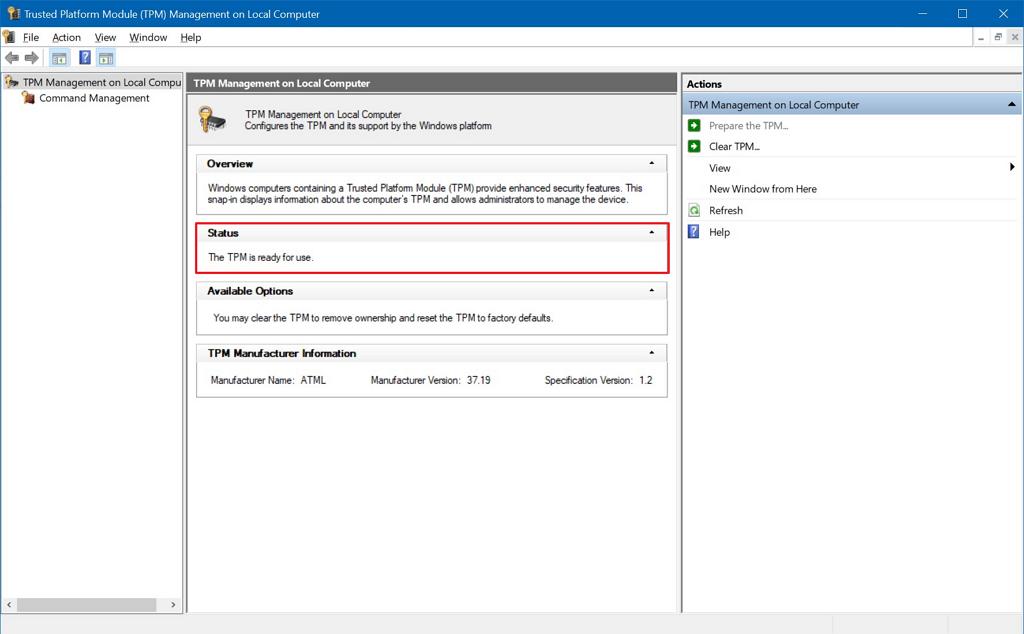

- THE DEVICE CANNOT USE A TRUSTED PLATFORM MODULE WINDOWS 10 FULL
- THE DEVICE CANNOT USE A TRUSTED PLATFORM MODULE WINDOWS 10 WINDOWS 10
- THE DEVICE CANNOT USE A TRUSTED PLATFORM MODULE WINDOWS 10 VERIFICATION
Green: Normal status, indicating full trust.The vSphere Client displays the hardware trust status in the vCenter Server's Summary tab under Security with the following alarms: When you boot an ESXi host with an installed TPM 2.0 chip, vCenter Server monitors the host's attestation status. Review the TPM 2.0 chips certified by VMware at the following location: Gii quyt: khc phc li This device cannot use a Trusted Platform Module, chng ta c th s dng Group Policy Editor khc phc li. For information about setting these required BIOS options, refer to the vendor documentation. Ngha l my tnh ca chng ta khng c chip TPM (Trusted Platform Module). ESXi 6.7 host or later with TPM 2.0 chip installed and enabled in UEFIĮnsure that the TPM is configured in the ESXi host's BIOS to use the SHA-256 hashing algorithm and the TIS/FIFO (First-In, First-Out) interface and not CRB (Command Response Buffer).To use a TPM 2.0 chip, your vCenter Server environment must meet these requirements: If vCenter Server determines the signed quote is invalid, remote attestation fails and the host is not trusted. It is the direct successor to Windows 8.1, which was released nearly two years.
THE DEVICE CANNOT USE A TRUSTED PLATFORM MODULE WINDOWS 10 WINDOWS 10
VCenter Server verifies the authenticity of the signed quote, infers the software versions, and determines the trustworthiness of said software versions. Windows 10 is a major release of Microsofts Windows NT operating system. By checking that the information corresponds to a configuration it deems trusted, a vCenter Server identifies the platform on a previously untrusted host. VCenter Server requests that the host sends an Attestation Report, which contains a quote of Platform Configuration Registers (PCRs), signed by the TPM, and other signed host binary metadata.
THE DEVICE CANNOT USE A TRUSTED PLATFORM MODULE WINDOWS 10 VERIFICATION
Part of the AK creation process also involves the verification of the TPM hardware itself, to ensure that a known (and trusted) vendor has produced it. When an ESXi host is added to, rebooted from, or reconnected to vCenter Server, vCenter Server requests an AK from the host.

ESXi hosts can use Trusted Platform Modules (TPM) chips, which are secure cryptoprocessors that enhance host security by providing a trust assurance rooted in hardware as opposed to software.


 0 kommentar(er)
0 kommentar(er)
